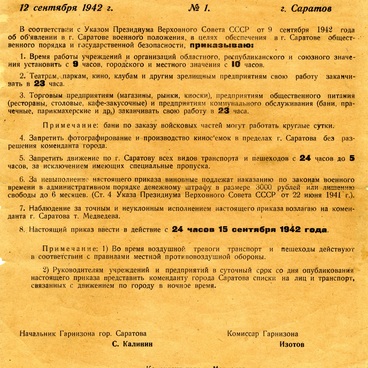The Saratov concertina has been considered to be a sort of calling card for a very long time, and one that is a symbol of Saratov Province. The concertina came to Russia in the 1830s. By the end of the century, the instrument was produced in many cities around the country: Cherepovets, Vyatka, Neva, Nizhniy Novgorod, Liven, and Saratov concertinas were well-known. They differed in terms of their external form and how the tone rows were set up.
Since the 1860s, Saratov artisans that did repair work on imported concertinas began to create instruments that differed from others by the strength of the sounds that they emanated, their particular timbre, and the presence of bells. The concertina with bells swiftly started to be used in peoples’ everyday lives, and became widespread. In addition to bells, the Saratov concertina had one more distinctive external feature: a “lyre”, meaning decorative finishing on the sound hole. In 1870, a concertina workshop opened up in Saratov. It was founded by Nikolay Korelin, the first Saratov craftsman who received certification for the right to be in the concertina business. It was only possible to receive this kind of certification after going through both theoretical and practical testing with the Saratov trade council.
At the beginning of the 20th century, there were already eight workshops that produced concertinas in Saratov. The workshop occupied a small space. The main scope of repair work on the instrument was done by an artisan, who was assisted by apprentices and students. Among the most famous artisans, it is worth pointing out the following people, who were Nikolay Korelin’s students: Dmitriy Zharkov, Mikhail Korelin, and Khrisanf Artemiyev.
In the 1920s, concertina artisans united into a cooperative called Saratov Concertina (later renamed as the Music Cooperative). Over time, the cooperative turned into a modern continuous production facility, with an output of up to 8,000 concertinas per year.
The popularity of this musical instrument was extraordinary. During the years of WWII, many Saratov residents took concertinas with them to the front. In the post-war period, virtually all cultural centers had ensembles that played on the Saratov concertina. And, even though there are no longer any production facilities that manufacture Saratov concertinas, even now the instrument has still not been forgotten.
Since the 1860s, Saratov artisans that did repair work on imported concertinas began to create instruments that differed from others by the strength of the sounds that they emanated, their particular timbre, and the presence of bells. The concertina with bells swiftly started to be used in peoples’ everyday lives, and became widespread. In addition to bells, the Saratov concertina had one more distinctive external feature: a “lyre”, meaning decorative finishing on the sound hole. In 1870, a concertina workshop opened up in Saratov. It was founded by Nikolay Korelin, the first Saratov craftsman who received certification for the right to be in the concertina business. It was only possible to receive this kind of certification after going through both theoretical and practical testing with the Saratov trade council.
At the beginning of the 20th century, there were already eight workshops that produced concertinas in Saratov. The workshop occupied a small space. The main scope of repair work on the instrument was done by an artisan, who was assisted by apprentices and students. Among the most famous artisans, it is worth pointing out the following people, who were Nikolay Korelin’s students: Dmitriy Zharkov, Mikhail Korelin, and Khrisanf Artemiyev.
They received orders from cities along the Volga River, Siberia, the Russian Far East, and southern Russia.
Concertinas by these artisans are on display in the museum’s collection.
In the 1920s, concertina artisans united into a cooperative called Saratov Concertina (later renamed as the Music Cooperative). Over time, the cooperative turned into a modern continuous production facility, with an output of up to 8,000 concertinas per year.
The popularity of this musical instrument was extraordinary. During the years of WWII, many Saratov residents took concertinas with them to the front. In the post-war period, virtually all cultural centers had ensembles that played on the Saratov concertina. And, even though there are no longer any production facilities that manufacture Saratov concertinas, even now the instrument has still not been forgotten.

